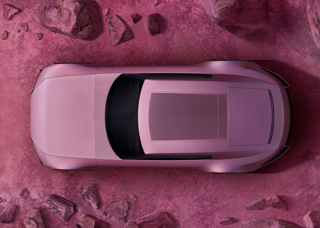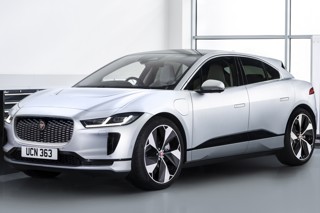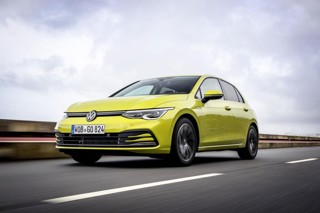"Look at the way Land Rover has evolved – compare it with Jaguar and one fade of the reasons we need a recovery plan becomes clear. Maybe the way ahead is to have a common architecture on which you can base a number of derivatives in order to achieve greater efficiency," says Jaguar and Land Rover vice-president and chief operating officer Joe Greenwell.
After almost a decade of disappointing returns and a £601m loss last year, Greenwell is working to return one of the UK’s most famous brands to good shape. Weeks after launching controversial steps that include ending production at Browns Lane, he’s in the spotlight at Detroit motor show, taking the wraps off a slinky 2+2 concept coupe that will replace the XK8 in 12 months’ time. Back behind his temporary office desk, he can hardly conceal his delight at attracting the show’s biggest media crowd – and winning an enthusiastic response.
"This is the first rung of the ladder. I wasn’t joking when I said we had some pretty exciting products waiting in the wings," says Greenwell, a long-serving Jaguar executive who returned to Coventry after holding senior posts with Ford in Europe and the US.
"Our plan for recovery is all about addressing the business structure and introducing a new generation of products. Of course, the action we’ve taken has been painful, but there was no alternative: it was clear we were not going to meet our revenue targets and that we had a cost structure that was out of balance.
"The Browns Lane issue was one of the fundamentals that had to be addressed if we were going to stabilise the company, get back to breakeven and then achieve satisfactory returns for Ford. There’s no quick fix, but I believe we can reconstruct a successful business." With the benefit of hindsight, Greenwell ponders the wisdom that led to the growth strategy agreed in 1999, assuming annual volume of 200,000 units.
"What we set out to do was ambitious and reflected a degree of over-optimism. The volumes were set around the X-type, which has in fact done very well. But the 200,000 target included assumptions for cabriolet and high-performance ‘R’ versions – and that was over-ambitious.
"We went from two models to four, all with different architectures, all needing in-cycle freshening action, engineering resource. We were also planning the XJ replacement in aluminium."
Another complication came from adding capacity. “It would have been smarter to have made better use of existing capacity and adopted simplified architectures. Just like at Land Rover, in fact," Greenwell admits. "The way ahead is to have a common architecture on which you can base a number of derivatives so you get more investment efficiency."
Greenwell accepts executives underestimated the competition and points to tardiness over diesel as another big contributor to loss making. “Another problem has been the increase in incentives in the US premium sector," he says. "That has put added pressure on margins, allied to the pain we’ve had over the very weak dollar.
"We still sell 40% of our volume in the US, but we took 15,000 units out of production for that market to help alleviate our difficulties. I think we must be better at inventory management in future. We must never again allow stocks to get to such a level that the end result is cars left sitting on dealer lots."
Words to warm the hearts of retailers. James Brearley, dealer council chairman, claims the network is looking ahead to a much improved year after 2004’s struggles. “We have seen the company’s potential products for the next four years and we are all extremely excited,” he says. "We have more faith in the management than we’ve felt for the past 10 years."
Back to Greenwell: "It has been suggested that I’m back at Jaguar to preside over the winding down of the company. Am I hell! I wouldn’t accept that kind of brief. I have a group of highly qualified senior managers who are utterly committed to making the plan work. They know how to manage Jaguar and will deliver."
New XK draws Detroit crowds

The concept coupe 2+2 unveiled by Jaguar was one of the biggest draws at this month’s Detroit motor show.
Set to become the new XK and scheduled for launch in early 2006, the lightweight coupe shows the design style and flare – Ian Callum was the chief architect – that Jaguar hopes to make standard on future product launches.
The aluminium body shell is around 40% lighter and 60% stiffer than standard sheet metal which, allied to Jaguar’s supercharged V8 engine, will enable the car to hit 62mph from a standing start within five seconds and on to a top speed of 180mph. It should also return improved fuel efficiency and mid-range performance.
Priced between £60,000-£70,000, key rivals for the XK will include the Mercedes-Benz SL, Porsche 911 and forthcoming Aston Martin AMV8, due to be unveiled at the Geneva motor show in March.
"This is the kind of car we are going to design and build to revitalise the Jaguar brand," says Callum.
"This is the future."


















Login to comment
Comments
No comments have been made yet.